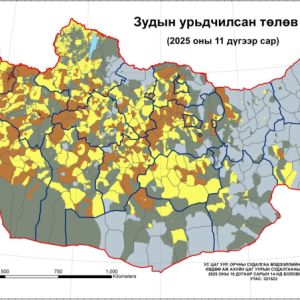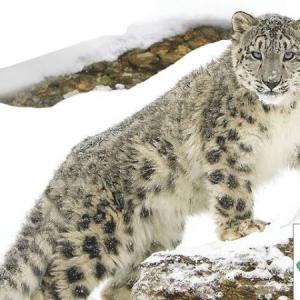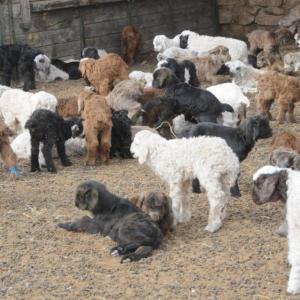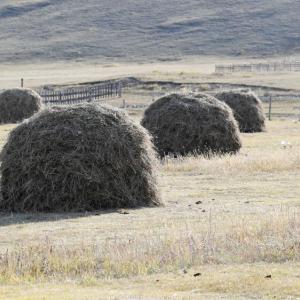Gobi Great Six initiative’s efforts to save Mongolian Saiga
The Mongol MessengerIn our previous issue, the Mongol Messenger introduced the Gobi Great Six initiative by the WWF Mongolia Program Office committed to saving six globally endangered animals which critically requires conservation efforts from the worldwide community. Wild Bactrian Camel, Gobi Bear, Takhi or Wild Horse, Khulan or Wild Ass, Mongolian Saiga, and Goitered Gazelle play a crucial roles in the integrity and wellness of the Gobi ecosystem and human livelihoods. We will be publishing six series of articles about those species that are in danger of going extinct in the near future and efforts the WWF is making to save in the scope of the Gobi Great Six Initiative.
 Mongolia Saiga - an endangered antelope that originally inhabited a vast area of the Eurasian and Central Asian territory.
Mongolia Saiga - an endangered antelope that originally inhabited a vast area of the Eurasian and Central Asian territory.
The southern part of the Mongolian Altai Sayan Ecoregion is characterized by flat plains, low mountains, rolling hills, and hillocks covered by different types of steppe and a network of lakes and wetlands. This area is the last refuge of the Mongolian Saiga (Saiga borealis mongolica), a distinct endemic subspecies of Saiga borealis that once roamed from the British Isles through Central Asia and the Bering Strait into Alaska and the Yukon. S. Borealis was a typical representative of the “mammoth biome” in the Pleistocene periglacial steppes and cryogenic savannahs. At the end of the Pleistocene when the mammoth disappeared, the range of S. Borealis was reduced. The Mongolian Saiga (S. T. Mongolica) is only found in a small area in western Mongolia around the Sharga and Mankhan Nature Reserves.
WWF (Global Program Framework) included the Saiga antelope as a footprint-impacted species. It is being poached aggressively for its horn, which is used in traditional Chinese medicine. Ahe recent study estimates that annual consumption in China is around 9 thousand kg and most likely the demand for Saiga horn is still high and not expected to decrease in the near future. The species also has been under ever increasing pressure from livestock competition and deterioration of its habitat.
During the late 1980s, Mongolian and Russian scientists jointly conducted comprehensive research in Mongolia and estimated the number of Mongolian Saiga to be at about 700, pointing out the necessity to protect this species. Since 1998, the WWF Mongolia inaugurated a project to protect the Mongolian Saiga in cooperation with local herders and residents. Thanks to the project, the number of the species increased to 6 thousand and other studies say the number of Mongolian Saiga has reached 13,800 in the past several years. The range area of Mongolian Saiga was extended by 13 percent since 1998. Protected areas cover 41.7 percent of Mongolian Saiga Habitat. The steppes in the depressions between the lower ranges of the Altai Mountain, in particular Shargiin Gobi, Khuisiin Gobi and Durgun steppe are the center of its distribution.
 In 2007, the WWF Mongolia started a comprehensive Saiga conservation project. The long term goal of this project is to maintain and restore the Mongolian Saiga in the Great Lakes Basin and extend its range to its former habitats. More recent estimates suggest that conservation measures led its population number to be doubled from around 8 thousand in 2010 to around 14,600 in 2015 according to Mongolian scientists. Moreover, most of the Mongolian Saiga birds births are twins, and a recent study shows that some 30 percent of all births are twins, which means this critically endangered species have a comparatively better chance to grow.
In 2007, the WWF Mongolia started a comprehensive Saiga conservation project. The long term goal of this project is to maintain and restore the Mongolian Saiga in the Great Lakes Basin and extend its range to its former habitats. More recent estimates suggest that conservation measures led its population number to be doubled from around 8 thousand in 2010 to around 14,600 in 2015 according to Mongolian scientists. Moreover, most of the Mongolian Saiga birds births are twins, and a recent study shows that some 30 percent of all births are twins, which means this critically endangered species have a comparatively better chance to grow.
The status of the Saiga improved significantly; however, its long term survival is still threatened by certain factors including habitat degradation caused by livestock due to overgrazing and unsustainable pasture use, competition for water, as well as climate fluctuations drying up surface water resources and increased frequencies of droughts followed by cold snowy winters. Population size usually decreases dramatically after severe cold months. For example, after the natural disaster due to dzud in Mongolia in 2002, its population was reduced to only 750. Also, poaching and the illegal trade of horn, skin and meat, which has tempting commercial value, is an immediate danger to the species. Even though it has not been confirmed officially, Mongolia Saiga are useful for livestock and the rural community as they eat one sort of succulent plant that is harmful for livestock animals.
 In his interview with Mongolian Daily Newspaper ‘Today’, B.Chimeddorj, Saiga Conservation Project Officer of the WWF Mongolia said that a study of WWF, which was conducted in 2010-2011 attached collars with automatic motion sensor cameras to 40 baby Saiga and found that eagles and foxes also pose great danger to the lives of baby Saigas – when they are at the most vulnerable stage of their lives. “Precisely estimating the population size of wild species is not an easy task to accomplish, however a direct method, such as trapping or counts of individuals observed is the most widely recognized throughout the world” he said.
In his interview with Mongolian Daily Newspaper ‘Today’, B.Chimeddorj, Saiga Conservation Project Officer of the WWF Mongolia said that a study of WWF, which was conducted in 2010-2011 attached collars with automatic motion sensor cameras to 40 baby Saiga and found that eagles and foxes also pose great danger to the lives of baby Saigas – when they are at the most vulnerable stage of their lives. “Precisely estimating the population size of wild species is not an easy task to accomplish, however a direct method, such as trapping or counts of individuals observed is the most widely recognized throughout the world” he said.
Specialists of the WWF Mongolia in cooperation with the Wildlife Research & Conservation Society, Environment Office of aimags and administrative offices of specially protected areas of Mongolia organized research on over 12 thousand km land territory of the Mongolia Gobi and Durgun Steppe – range areas of Mongolia Saiga. Such methods have been performed in the country over the last decade as it is believed to not only to be cost-effective, but also has the advantage of providing information on climate, precipitation levels and pasture lands.
Since 1930, Mongolia has prohibited hunting Mongolian Saiga which is listed in the Mongolian Red Book of Endangered Species as a specially protected species. However, poaching for Mongolian Saiga is still rife in Mongolia, downgrading the efforts and contributions of MMF Mongolia to safeguard the endangered species by carrying-out a variety of projects and studies.
B.Oyundelger
Photo source: Save Nature Save Human
The article is featured in the Mongol Messenger's issue No. 45 for November 11.
 Ulaanbaatar
Ulaanbaatar













































































